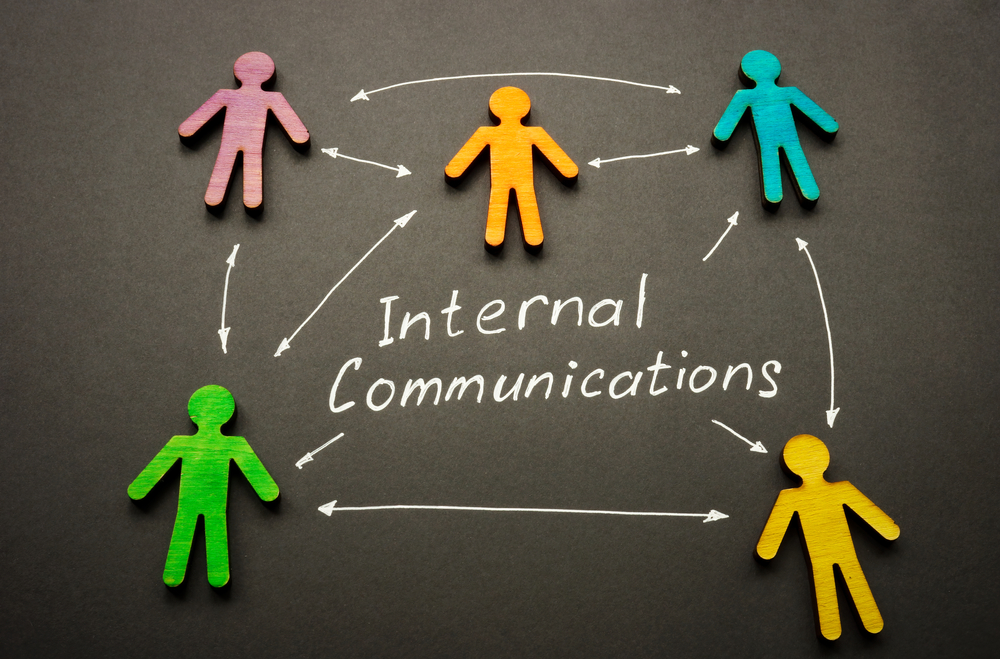
Monday August 5, 2024
How to Unlock the Strategic Value of Internal Communications
Internal communications play a pivotal role in aligning employees with the organisation’s goals and objectives. It is a communication system that ensures every individual is working towards a shared purpose, which provides numerous benefits, such as improved employee engagement, creating more impactful teams that contribute to a great working environment, and ultimately, driving the organisation’s growth.
How, you may ask? Organisations with high levels of employee engagement outperform those with low levels of engagement by a whopping 202%. In addition, organisations with a great work culture see a fourfold increase in revenue compared to those that do not.
How to implement effective internal communications
Similarly to implementing any strategy, setting clear objectives for your internal communication efforts is crucial. Whether you want to improve employee engagement, align teams with organisational goals, or cultivate a culture of innovation, defining specific objectives will serve as the north star guiding your overall strategy.
Next, it is important to conduct an audit, as your opinion on the state of the organisation’s internal communications might not be as accurate as you think. According to a study by GE and Ipsos, 85% of top leaders think that company values are communicated effectively, in contrast to only 62% of entry-level employees. Another study by Axios found that 77% of leaders believe their communications provide the context employees need to do their jobs well, compared to only 46% of staff members.
Assessing the existing internal communications practices and effectiveness could be done by conducting an employee feedback survey or even bringing in a core team of representatives across departments to discuss the current strategies and identify areas of improvement. This will provide you with insights to benchmark against the specific objectives you have set.
While it is vital to tailor your organisation’s internal communications strategy to its specific needs, here are some general good practices you should consider implementing.
Utilise a variety of channels
Do not rely solely on one communication channel. Instead, leverage a mix of channels, depending on the message or employee(s) you are trying to reach. For example, if you are trying to reach every employee, you could do so through monthly employee newsletters. On the other hand, messages to individual employees can be conveyed through collaborative platforms such as Slack or Microsoft Teams.
Encourage and welcome two-way communication
Effective internal communication is a two-way street. Encourage employees to share feedback, ideas, and concerns and actively listen to their input. Provide opportunities for open dialogue through channels such as town hall meetings or employee forums. Such a culture of open communication creates a more engaged and empowered workforce.
Implement inclusive communications
Your company may be legally held accountable if it is determined that how you interact with employees is discriminatory. However, beyond that, ensuring inclusive communications is another step to truly foster effective internal communications to engage with a diverse workforce.
According to the CIPR, inclusive communications can be implemented through plain and straightforward language, simple document layouts, diagrams and images, videos, and other means that allow information to be as easily digestible as possible for a broad and diverse audience.
Celebrate successes and milestones
More than half (51%) of employees said their last work anniversary was not acknowledged, reducing their sense of belonging to the organisation and, in turn, their engagement levels. It was found that 69% of employees said they would work harder if they were better appreciated. Consider implementing recognition programs or holding regular team celebrations to acknowledge accomplishments.
Establish consistent messaging
The famous saying, “consistency is key,” applies to effective communication. Ensure that messages align with your organisation’s values, mission, and brand identity. To do so, you could develop key messaging points that are present across all communication channels. This reinforces your organisation’s identity and builds trust with employees.
Maintain a level of transparency
Be open and honest with employees about company goals, performance, and challenges. Share updates on company news, initiatives, and decisions, and provide context to help employees understand the broader impact. Although specific information may require confidentiality, it is essential to clearly communicate the rationale behind maintaining such confidentiality, especially as 33% of employees said a lack of open, honest communication has the most negative impact on employee morale.
Measure and evaluate performance
Last but not least, improving your internal communications is a goal, and it is known that goals should be SMART (Specific, Measurable, Achievable, Relevant, and Time-Bound). Focusing on measurability, it becomes essential to establish key performance indicators (KPIs) to track metrics such as employee engagement, message reach, and feedback. This can be done through monthly or quarterly internal feedback surveys.
Once the data is collated, you could use it to evaluate the impact of your communication initiatives and identify areas for improvement. Continuous performance monitoring will allow you to refine your communication strategy and ensure it remains aligned with your organisational goals.
To learn more about effective internal communications, read our previous blog: 5 Must Read Books on Internal Communications.
Curzon PR is a London-based PR firm working with clients globally. If you have any questions, please feel free to contact our Business Development Team bd@curzonpr.com







Follow us